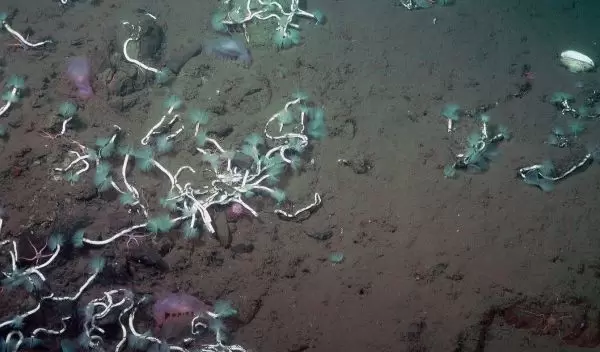
Deep-sea worms and bacteria team up to harvest methane
Scientists at Caltech and Occidental College have discovered a methane-fueled symbiosis between worms and bacteria at the bottom of the sea, shedding new light on the ecology of deep-sea environments.
The National Science Foundation-funded researchers found that bacteria in the Methylococcaceae family are hitching rides on the feathery plumes of Laminatubus and Bispira worms. The plumes act as respiratory organs. Methylococcaceae harvest carbon and energy from methane.
The worms, which are a few inches long, have been found in great numbers near deep-sea methane seeps, vents in the ocean floor where hydrocarbon-rich fluids ooze into the ocean. Although it was unclear why the worms favored the vents, it turns out that the worms slowly digest the hitchhiking bacteria and thus absorb the carbon and energy the bacteria harvest from the methane.
"These worms have long been associated with seeps, but everyone just assumed they were filter-feeding on bacteria," says Victoria Orphan, a geobiologist at Caltech and co-author of a paper on the worms published in Science Advances. "Instead, we find that they are teaming up with a microbe to use chemical energy to feed in a way we hadn't considered."
Orphan and her colleagues made the discovery during research cruises to study methane vents off the coast of Southern California and Costa Rica.
To probe the nature of the relationship between the worms and the bacteria, the scientists used robotic submersibles to take samples from deep-sea methane vents, which, in this case, lie 1,800 meters (more than 5,900 feet) below the ocean surface.
"This is a fascinating example of how symbiosis allows animals to broaden their diets and survive on novel energy sources," says Dan Thornhill, a program director in NSF's Division of Ocean Sciences. "With the help of bacteria, these worms are living, growing and reproducing using energy from fossil fuels in deep ocean sediments."
